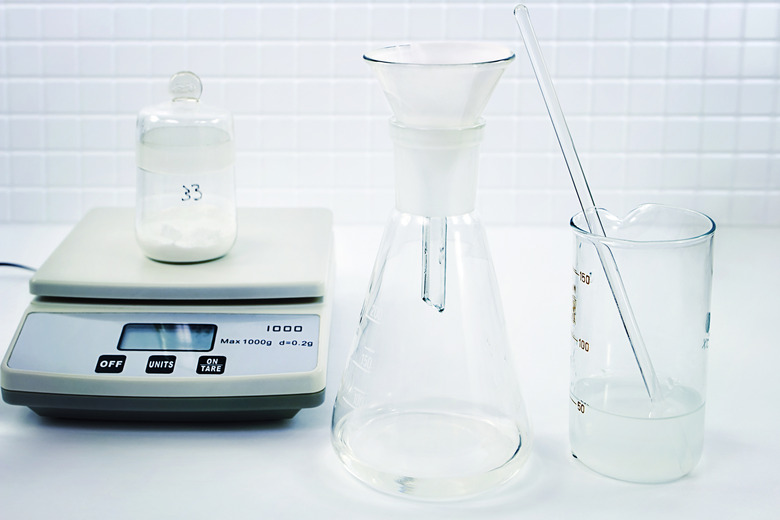How To Convert AMU To Mole
Atomic mass units (AMU) and moles are two ways of measuring an atom or other particle. AMU is essentially a measurement of the weight of a single proton or neutron. A mole, on the other hand, is a very specific number of particles: 6.022045 x 10^23. That is to say, a mole of any particle contains that many particles, the same way a dozen always means 12. Because different atoms and molecules have different weights, to convert from AMU to mole you must know exactly the particle you're using in order to know the weight of one mole of it.
Step 1
Convert the AMU value to grams by multiplying it by 1.67 x 10^-24. For example, 6 x 10^23 AMU times 1.67 x 10^-24 yields 1 gram.
Step 2
Find the molar weight (grams per mole) of the atom on the periodic table (see Resources). For example, oxygen's molar weight is approximately 16. This is the weight of one mole of oxygen atoms in grams. It also happens to be the weight of one atom of oxygen in AMU.
Step 3
Divide the result from Step 1 by the molar weight from Step 2. With oxygen, 1 gram divided by 16 grams per mole equals 0.0625 moles. Therefore, the weight 6 x 10^23 AMU is equivalent to 0.0625, or one-sixteenth, of a mole of oxygen.
Cite This Article
MLA
Friedman, Joe. "How To Convert AMU To Mole" sciencing.com, https://www.sciencing.com/convert-amu-mole-7731092/. 13 March 2018.
APA
Friedman, Joe. (2018, March 13). How To Convert AMU To Mole. sciencing.com. Retrieved from https://www.sciencing.com/convert-amu-mole-7731092/
Chicago
Friedman, Joe. How To Convert AMU To Mole last modified March 24, 2022. https://www.sciencing.com/convert-amu-mole-7731092/
